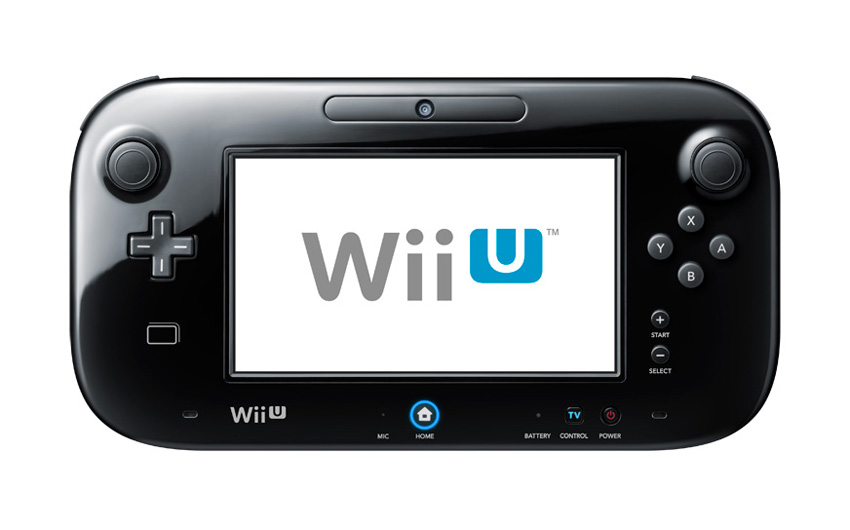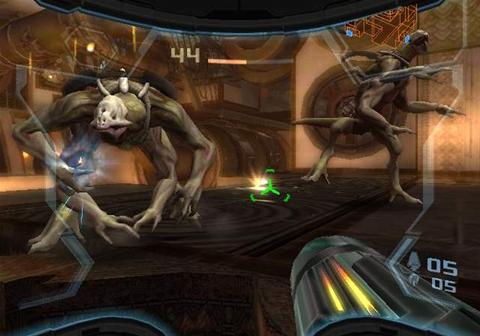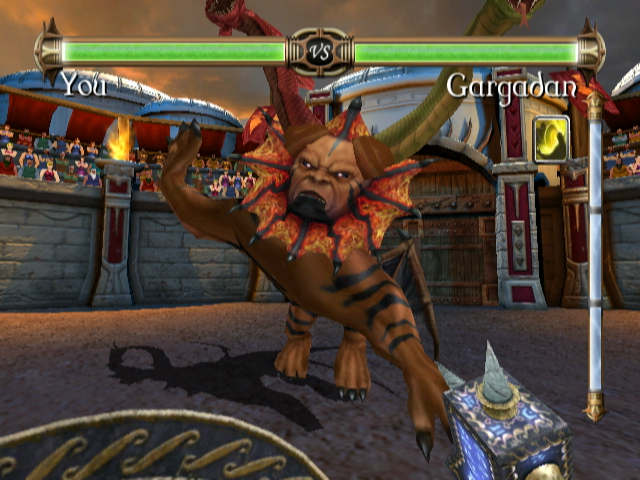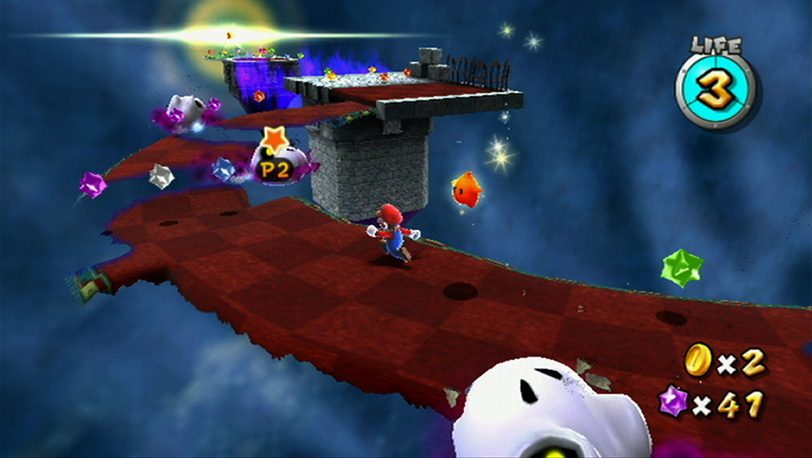Okay, the Wii and the Wii-U have gotten a lot of hate. The Wii from the hardcore crowd over the
course of it's lifetime and the Wii-U for a lackluster launch lineup which has
yet to improve. However, what I think
people often forget is that while both consoles have used gimmicks and tricks
to sell games, their hardware do have specific strengths. You can scoff all you want at the shoe-horned
in bits of gameplay which rely on waggling the Wiimote or meddling with the
Wii-U game pad. I have no issue with that,
as gameplay needs to be organic.
However, try and remember that hardware is created with specific things
in mind. Remember that while you
shouldn't use a hammer to fix a shattered dinner plate, you should use a hammer to nail
down a board. The right tool for the
right job. Are the Wiimote and Wii-U
controller often used for gimmicky gameplay?
Sure. But the fact is, they do
have practical uses that are both fun and engaging. And I intend to discuss this with the gaming
public because, while I think it's fine to demand developers stop using
gimmicky controls, that doesn't mean we should declare a new piece of hardware
a failure just because it does something different from what we're used to. We need to encourage developers to use the
right tool for the right job.
First, I
want to look at the Wiimote. This was
the defining feature of the Wii. Motion
controls. It was a way to attract the
casual gaming crowd, but also a new way to experience old classics. However, what many games did was try to FIND
a use for the Wii-mote rather than build a game AROUND it. Herein lies the problem. If you have to find a use for a new piece of
tech, chances are you're better off making a game in the traditional style. Sure, it won't be as gimmicky and might not
be as memorable...but it will be a lot more fun and will probably sell
more. So, what can the Wiimote's motion
sensors do? Well, the basic actions it
seems to be good at are slashing, pointing, dragging, detection of distance and
force based on position, and shaking. Now, if a game is setup properly, it can make
use of these features and actually create an engaging product.
 |
| One thing no one can deny is that the Wiimote offered a style of gameplay unlike anything we'd ever seen in the past. |
Slashing is
pretty self explanatory. Games like
Dragon Quest Swords and Legend of Zelda: Skyward Sword focus on using the
slashing action to determine speed, angle, and to mimic certain sword
motions. These work well for your
typical action game, provided it's set up to recognize the slashes and to have
a reason to do more than flail about, like an enemy who can block in one
direction, so you need to slash in a different one. And these two games do that well.
| There's something inherently cathartic about slashing something to bits and this is one thing the Wiimote can do very well. |
Pointing
actually has a lot of implications. You
can use it for an adventure game or a hidden object game, like Zak and Wiki,
where it mimics the movement of a mouse on a PC. However, they can also be used for light gun
games, where if you point at an enemy, you will shoot it. When done properly and either put on rails or
integrated with competent movement controls, this makes shooters much faster,
more intense, and more personal. Games
like Sin and Punishment: Star Successor or Metroid Prime 3: Corruption have
proven this much. It can also be used to
simply set objective markers or to touch icons, like in Battalion Wars 2 where
you can switch units by clicking on their icon or in Overlord: Dark Legend
where if you click on something, your minions will either attack it or grab it.
Dragging
was made very useful in the Trauma
Center games on the Wii. If you click on a specific tool, like a
scalpel, or antibiotic gel, or sutures, then you can drag them across a surface
to perform a specific action. The
brilliance of this type of game is that if done properly it can mimic something
that is normally very difficult in real life and make players feel
accomplished. If you can break something
down to dragging, you could easily make a slew of popular and fun Wii games out
of many mobile titles and frankly, I'm shocked there was never an Angry Birds
or a stand alone construction game, like Sim City,
focused around dragging something a certain way.
 |
| Dragging sutures over a wound may not be how it's done in real life, but it makes for a fast paced and engaging play session in Trauma Center on the Wii. |
Detecting distance
and force based on position sounds complicated but it boils down to this. Sports games.
The Wii-mote detects the movement of your swing and the power based on
it's position and how rapidly that changes.
A swing of a golf club, rolling a bowling ball, hitting a tennis racket,
etc. Boxing was also popular using this
system and that has been proven to be adaptable. The game Rage of the Gladiator used this
system to take what amounted to a boxing game into a first person fantasy
fighter game against mystic monsters.
Shaking is pretty minor, all things considered, but if you lack buttons or
want to use a cathartic action, then it can be useful. Wario Land: Shake it made you feel good about
shaking the Wii-mote because you got money for it, making it very cathartic, or
the Kirby: Return to Dreamland title allowed you to shake the controller to
suck in things with greater force, eliminating the need for an additional
button. It's minor, but it does have
it's uses.
 |
| Pretty minor as far as the Wiimote's capabilities, but still enjoyable. Shaking does have its uses, after all. |
And of
course, any of these different skills can be integrated to create a relatively
unique and enjoyable game. Red Steel 2
managed to including pointing and slashing in the same game by making you a gun
slinging samurai. Trauma Team combined
dragging and pointing for doctor sessions and adventure game like triage and
post-mortem analyses. Wario Ware on the
Wii combined all these actions in various forms in different mini games. If you use your brain, you can actually get
quite a lot out of these simple actions.
 |
| By combining what the Wiimote was good at, crafty game developers could create unique and interesting experiences, rather than trying to do what other controllers already did better. |
The problem
with many developers was they either were trying to re-invent the wheel in
terms of game design or they did not accept the system's limitations. The Wii-mote's motion sensing should not be
used in a platform game or an action-adventure or fighting game where a d-pad
controller and standard jump controls would work better. A Metal Slug game where you need to waggle
the remote to throw a grenade is the opposite of intuitive. A Wii-mote does not need to be used for games
that already have decent control schemes and I think this is what scared off
many hard core gamers. They saw Mario
Galaxy having the shoe-horned in star bit collecting when just replacing coins
with star bits would have been more fun and accessible and grew fed up. That aside, you also have to accept the
limitations of the Wii-mote. It can have
trouble with path finding or is loopy for a little bit when it goes from off
screen to on screen. Some games allow you
to recalibrate it's position and this can help, but...don't try and do something
the Wiimote can't do. If you want it to
spin, don't, because more often than not, the motion sensors will just get
confused. Don't try and make it detect
movements like reeling back, because if the sensor goes off screen, it will go
all loopy. And if you're making a long
game, like an RPG, and want to use motion sensors, then either offer an option
for an alternate control scheme through mundane parts so player's arms don't
get tired, or make the game best suited for small spurts over a long period, so
gamers don't get fed up with all the motion controls.
Now, this
information is kind of useless posthumously aside from just making people try
to appreciate the Wii when it does it's job right. However, while the Wii may be done and games
aren't really being made for it anymore, you can take these conventions of game
design and use them for the Wii-U. What
does the Wii-U have? It has a big tablet
controller with a touch screen. So,
build a game around that. A game that
works intuitively. In fact, mobile games
might be a good place to look. Get HD
ports of games like Fruit Ninja, Angry Birds, or Infinite Blade which require
touch screen controls and have them work with the Wii-U tablet. More than that, look to the DS and 3DS for
inspiration. You have a touch screen, so
touch things. Don't try and make the
tablet give you information that you could have just as easily gotten off a TV
screen, like with ZombiU. Allow someone
to go cooking or crafting on the Wii-U like with Cooking Mama on the DS. Use the touch screen for path finding, like
in the DS Zelda games, like Phantom Hour Glass.
Draw on the screen, like with Okamiden.
And don't forget what was learned with the Wii controls. You can drag, slash, point, etc. on a touch
screen just as easily as you can with a Wii-mote. Make use of that.
 |
| Imagine how fun and intuitive this game would be on a Wii-U game pad in HD. Mind. Blown. |
Nintendo
land is actually really amazing in this aspect, as, like Wario Ware, it shows a
bunch of mini games showcasing the possibility of the game pad, from flicking on
it to throw shurikens, to using it to guide a character with path finding, to
touching the screen to alter certain parts of a level to keep a character from
dying. However, one thing I adore is
that in some games, like the Yoshi mini game, is that they use the tablet in
conjunction with the television. This
will be your big seller. Don't use the
tablet to replace information on the TV, but use it in CONJUNCTION with
it. Yoshi's game shows you a path on the
TV, then you can look down at the tablet to drag out the path you want Yoshi to
take. Then, he will do it on the
TV. This is a great way to use the touch
screen and it allows you to force cooperation with the tablet and the TV
because your goals are only visible on the TV, but your path is only visible on
the tablet...so you have to work together.
 |
| This is how you use the game pad right. Make it work with the TV rather than fighting against it. |
What else
can you use the tablet for? Well, just
some ideas, but...how about using the touch screen without forcing people to
look at it. Create item shortcuts on the
tablet that you can just touch without having to look down to make an action
game more intuitive. This would take
control and accessibility to a new level for games like Dark Souls. Or have the screen as a blank canvas that you
need to draw on, so you don't need to look at it, you can just draw and what
you draw affects the world on the TV.
There are lots of possibilities, however you cannot shoe-horn things
in. Making the Wii-U a scanner seems
like a good idea in ZombiU, as it allows you to use it as a sniper scope or scan for threats or see what
containers have what items...however, because of the size and the effort
involved, it feels really unintuitive and cumbersome, especially since you don't NEED the game pad to do these things...they can be done easier on the TV. The Wii-U needs to find things that it can
do, then build games around it's capabilities.
That's how you'll get hit titles.
 |
| Explain to me again why this couldn't be done on the TV instead of the game pad? |
Rayman
Legends actually offers an interesting compromise between looking at the TV and
looking at the tablet. You can do either
and still play the game, however in many sections, you can alter the
environment with a quick swipe or touch on the tablet, opening up new paths for
your character, however, often, you're timed or being chased, so you'll want to
see all the action on the big screen.
This creates a choice. You can
sacrifice control for a short cut or a power up and risk taking a hit or miss
the secret to survive. It creates a
dilemma where either path can finish the level, but where one may be more fun
or more challenging than the other, opening up venues for replayability. And it does this by mimicking a concept from
DS games and their touch screen controls.
And that kind of experience will be unique to the Wii-U. It's not necessarily a gimmick, but a
different kind of choice.
 |
| Go for a straight run through, or use the game pad to speed things up and open up short cuts? In Rayman Legends, the choice is yours. |
The Wii-U's
biggest benefit is that it is not shackled to the TV, because the tablet does
not require the TV to function...so, you could synchronize the Nintendo E-shop from
the DSi or the 3DS with the Wii-U to play those games on the tablet in HD. Or you could release games in a similar style
to mobile or DS games, relying on a touch screen, that can only be played on
the tablet. The biggest problem,
however, is that no one wants to invest in the Wii-U unless it has a proven
concept which works, like the Wii did with some of it's early titles, like
Punch Out or Dragon Quest Swords. No one
seems to know what to do and in the bloated AAA industry, few want to risk
anything on the Wii-U's novelty and unique capabilities.
The trick
is to use the right tool for the right job.
Look at the Wii-U and what it can do...and build a game around
that. It doesn't matter how simple or
ugly it is, so long as it uses the tablet and is fun. If you create a game that uses it but looks
like crap, release it as an E-shop game and take what you've learned to make a
more complete game. Just don't try and
re-invent the wheel or mistake the Wii-U's novelty for limitless
potential. Embrace the limits of the
tablet alongside it's strengths and work in conjunction with them. And this goes for all new tech. You don't need to create a survival horror
game or a shooter for the Kinect. What
can the Kinect do? Recognize
movements. Where would this be
useful? Dance games. If Microsoft or it's partners don't realize
the Kinect's strengths and instead keep trying to use the wrong tool for the
wrong job, then...it'll flop with the Xbox One just like it did for the Xbox
360. Same for the Playstation 3's
sixaxis...it had a set of strengths to be exploited, but like the Kinect, it
wasn't used to it's fullest. A few good
ideas were thrown out there, but...it was just too limited and the demand to
use it died down.
 |
| Last I checked, no one was clambering for another Kinect horror game. Why? Wrong tool for the wrong job. Use your hardware for what it's good at and you'll have better luck. |




No comments:
Post a Comment